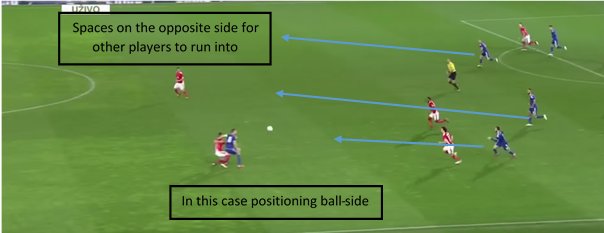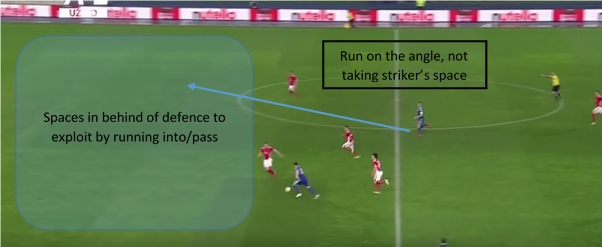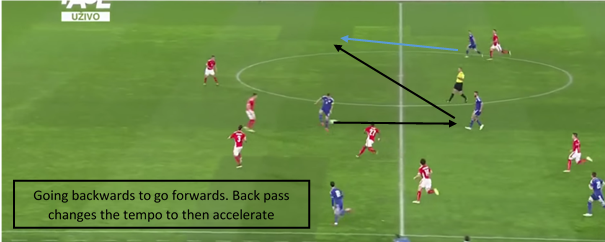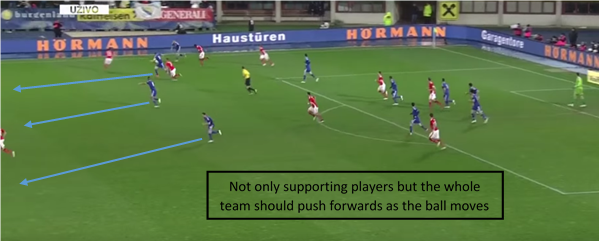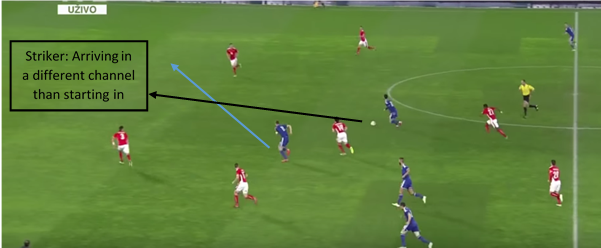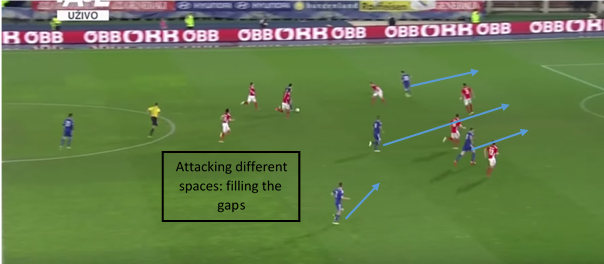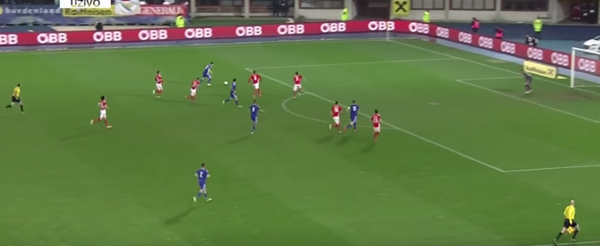By Alex Trukan
According to the type, counter-attack can be divided into four different styles: solo, classic, collective and advanced. Solo involves a player picking up the ball and running with it to score, while other players just make supportive runs to create space. A Collective one is based on a group of midfield players who play against disorganised defence. The Advanced type is when the ball is won higher up the pitch due to pressing being applied. The Classical type of counter-attacking strategy, which involves regaining possession deep in their own half and using quick play to progress forwards and score will be presented below.
Using the target man
When counter-attacking from deep position it is often a case of having 10 players behind the ball what makes it extremely difficult to collectively threaten the opposition defence. That is why, it is crucial to have a target man in front of the ball who can be used as a player to pass to and gain time for the supporting players to arrive. His positioning should be ideally on the weak side of the opposition (opposite to the ball), but sometimes he might come towards the ball to make the pass easier.
As a priority, the striker should try to threaten the space in behind of the defence, but in most cases that won’t be possible if attacking from deep positions and playing with just one player up front. As a second priority, he should hold the ball and drag as many player as possible towards the ball. Ideally that should be done in wide areas to create space in the middle.
As we can see below, if playing forwards is not possible (1v3), target man might go backwards or sideways to then go forwards. In order to make it quick and fluid, timing and direction of the supporting runs are crucial.
Supporting runs
As soon as the ball is played forwards into the striker, the midfielders should make immediate forward runs to support him. That might involve them running in behind the striker to stretch the opposition back line as well as providing support in front of him to be able to bounce it back. Reaction and decision making speed come before any tactical detail. Forward runs should be in a curved lines to make them more unpredictable.
As soon as the midfielders are in possession, the striker’s role is to stretch the opposition defensive line by making runs in behind and around them. Timing of the run is crucial to avoid offside (curved runs). Direction of the striker’s run will determine the direction of the midfielders’ runs and forward pass.
What it means is that midfielders will ‘fill in the gaps’ to cover different channels (not overlapping themselves in the runs). That will possibly stretch the back line and create gaps to play through. Again, the runs around the box shouldn’t be made in a straight lines. Straight runs around middle third are acceptable as they are the quickest.
[wpsharely id="2988"][/wpsharely]The final part of the counter-attack is an end product. It might be a shot or cross but transition into more patient positional attack is also an end product which might be converted into scoring opportunity later on.
Transition phase is complex to coach and often is based on reaction time and intuition. Therefore, the tactical detail should be as simple as possible and easy to implement in a high tempo situation.
By Alex Trukan, Development Coach, Nottingham Forest
@AlexTrukan

